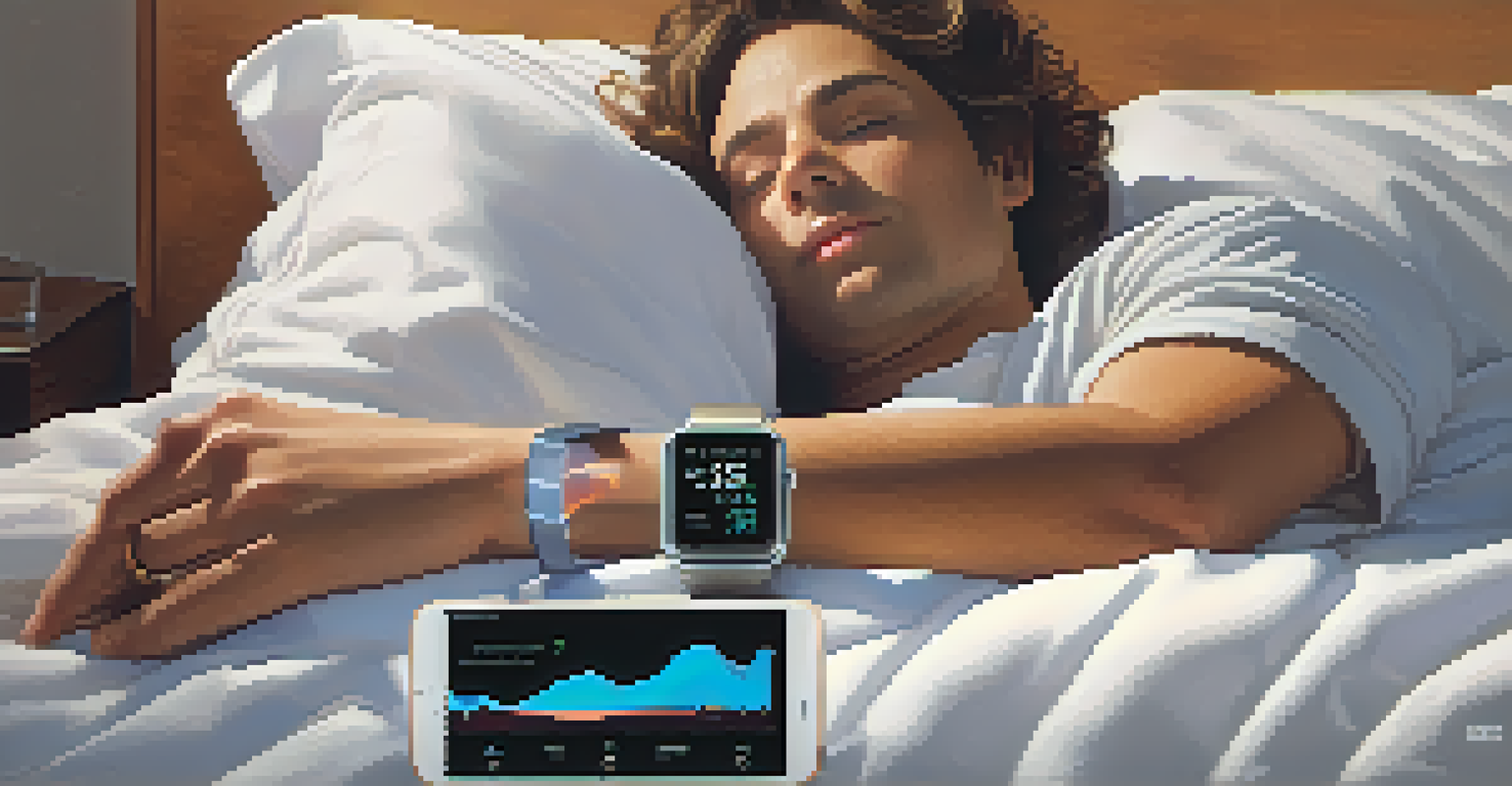How Smartwatches Are Changing the Way We Track Fitness

The Rise of Smartwatches in Fitness Tracking
Over the past few years, smartwatches have evolved from simple timepieces to essential fitness tools. With their advanced sensors and capabilities, they can track a variety of activities, from running to cycling, and even swimming. This transformation has made fitness tracking more accessible to everyone, whether you’re a seasoned athlete or just starting your fitness journey.
The greatest wealth is health.
Many people now rely on their smartwatches to monitor their daily activity levels, heart rates, and calories burned. This convenience means that fitness tracking is no longer a chore but a seamless part of daily life. Instead of scribbling down workouts or relying on bulky equipment, users can check their progress at a glance on their wrists.
As technology continues to advance, smartwatches are becoming more sophisticated, offering features like GPS tracking and sleep monitoring. This broad range of functionalities has helped users stay motivated and accountable, making fitness a more integrated part of their lifestyle.
Real-Time Data for Better Decision-Making
One of the standout features of smartwatches is their ability to provide real-time data. As you exercise, your watch can display instant feedback on your performance, allowing you to adjust your pace or intensity on the fly. This immediate insight can be a game changer, especially for those looking to improve their fitness levels quickly.

For instance, if you’re out for a run and see your heart rate climbing higher than your target zone, you can slow down to avoid overexertion. This real-time insight not only enhances performance but also fosters a deeper understanding of how your body responds to different activities.
Smartwatches Enhance Fitness Tracking
Smartwatches have transformed fitness tracking into a seamless part of daily life, making it accessible for everyone.
Moreover, the ease of accessing this information encourages users to stay more engaged with their workouts. Instead of guessing how hard they’re pushing themselves, they can rely on accurate data, making fitness tracking a more informed and enjoyable experience.
Motivation Through Gamification
Smartwatches have also introduced an element of gamification to fitness tracking, which can significantly boost motivation. Features such as challenges, badges, and leaderboards create a fun and competitive environment. Users can set personal goals, compete with friends, or even join global challenges, turning exercise into a game.
You can’t put a limit on anything. The more you dream, the farther you get.
For example, many smartwatches allow you to participate in step challenges with friends, where you can see who walks the most steps in a week. This friendly competition not only motivates individuals to stay active but also fosters community and connection among users.
By making fitness tracking feel like a game, smartwatches can help users develop healthier habits without them even realizing it. The joy of achieving a new badge or reaching a milestone can serve as a powerful incentive to keep moving forward.
Integration with Health Apps and Ecosystem
Another significant advantage of smartwatches is their ability to integrate with various health apps and ecosystems. Most smartwatches can sync with apps that track nutrition, sleep, and overall wellness, providing a comprehensive view of your health. This holistic approach allows users to see how their fitness impacts other areas of their life.
For example, syncing a smartwatch with a nutrition app can help users track their calorie intake alongside their calories burned. This complete picture can lead to more informed choices, whether you’re trying to lose weight, gain muscle, or maintain a healthy lifestyle.
Real-Time Data Boosts Performance
The ability to access real-time data during workouts allows users to make immediate adjustments, enhancing their fitness experience.
The seamless integration between devices and apps makes it easier for users to stay on top of their health goals. With everything connected, there’s less chance of losing track of important information, making it simpler to stay accountable.
Personalized Fitness Plans and Insights
Smartwatches are not just about tracking; they also offer personalized fitness plans tailored to individual needs. Many devices utilize algorithms that analyze your data and suggest workouts or recovery times based on your performance. This level of customization can help users optimize their fitness journeys.
Imagine having a personal trainer on your wrist, guiding you through workouts that suit your current fitness level and goals. Whether you need to increase your running distance or focus on strength training, smartwatches can recommend specific exercises to help you achieve those objectives.
Additionally, these insights can evolve as users progress, adjusting recommendations based on improvements or setbacks. This adaptability ensures that fitness plans remain relevant and effective, fostering continuous growth.
Sleep Tracking for Overall Wellness
While fitness is often the primary focus, the role of smartwatches in monitoring sleep cannot be overlooked. Many smartwatches come equipped with sleep tracking features that analyze sleep patterns, duration, and quality. Understanding sleep is crucial for recovery and overall well-being, making this feature invaluable.
For instance, if a user notices they’re getting less deep sleep than recommended, they can adjust their bedtime routine or lifestyle choices to improve their sleep quality. This awareness can lead to better recovery and enhanced performance in workouts.
Affordable Options Promote Health
The growing variety of affordable smartwatches ensures that fitness tracking tools are accessible to a wider audience, encouraging healthier lifestyles.
By emphasizing the importance of sleep alongside fitness, smartwatches help users adopt a more comprehensive approach to health. This holistic view promotes balance, ensuring that fitness isn’t just about activity but also about rest and recovery.
Accessibility and Affordability of Smartwatches
With the growing popularity of smartwatches, there are now options available for various budgets, making fitness tracking accessible to more people than ever. Whereas early models were often pricey, today’s market features a wide range of smartwatches with varying functionalities at different price points. This affordability means that anyone can find a device that suits their needs.
For example, budget-friendly smartwatches still offer essential tracking features like heart rate monitoring and step counting, ensuring that users can still get valuable insights without breaking the bank. This democratization of technology encourages more individuals to take charge of their fitness journeys.

Ultimately, the combination of increased accessibility and advanced technology means that smartwatches are helping to create a healthier society. By making fitness tracking tools available to a broader audience, we’re promoting active lifestyles and healthier habits.